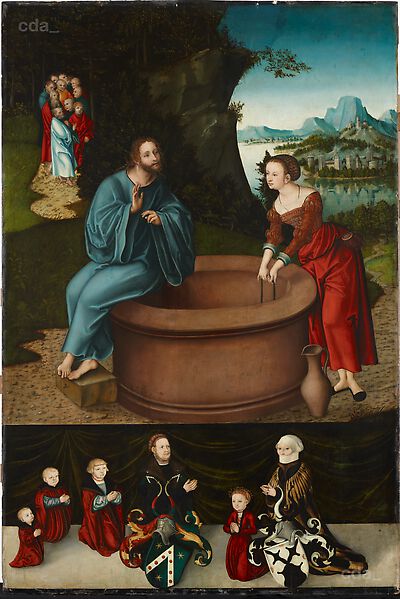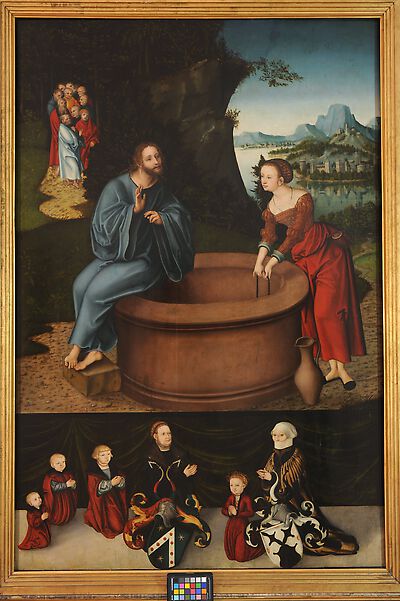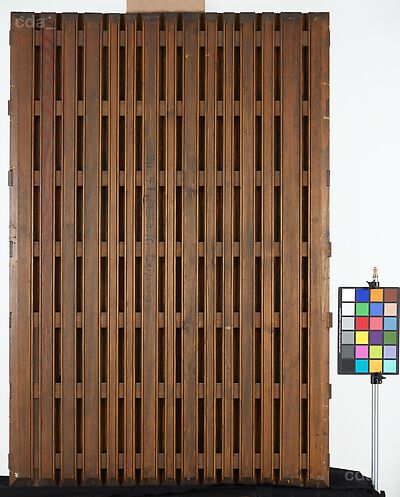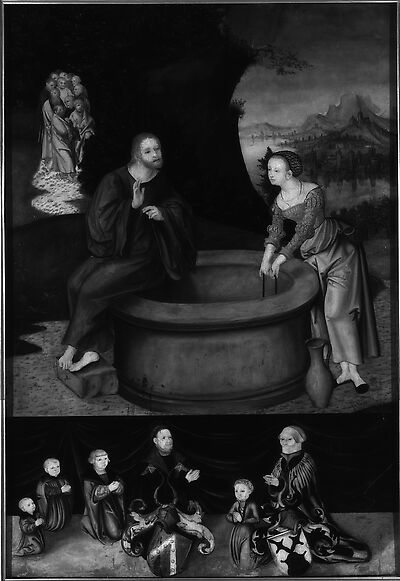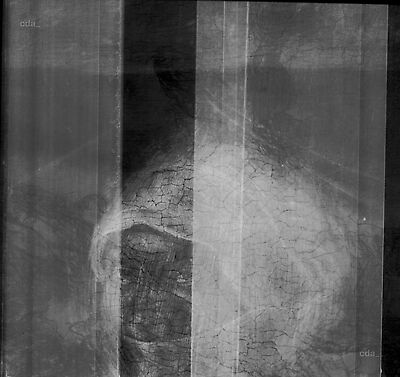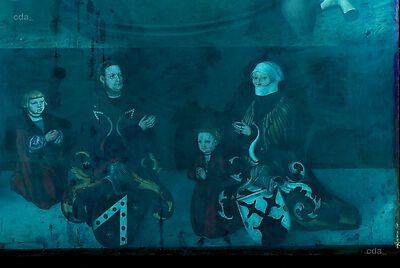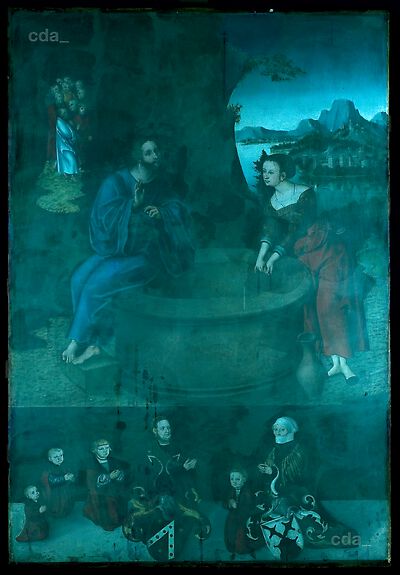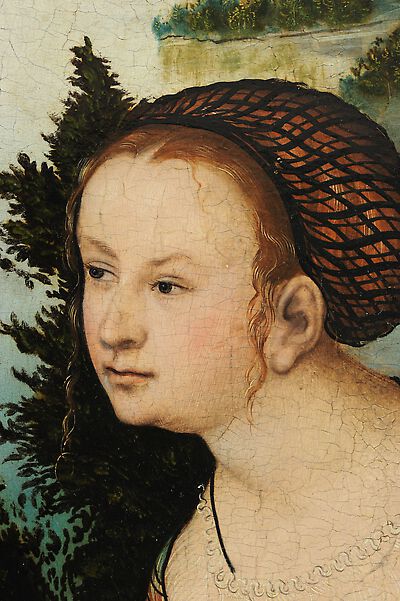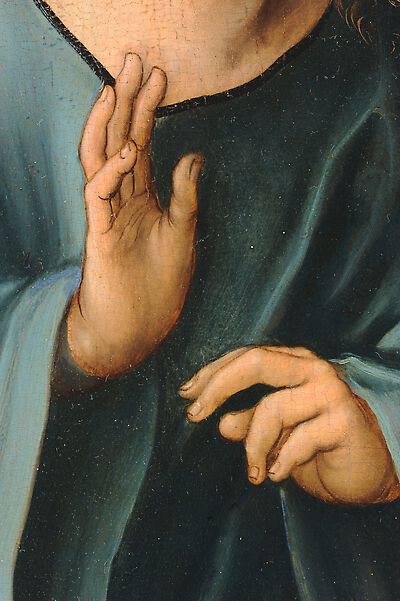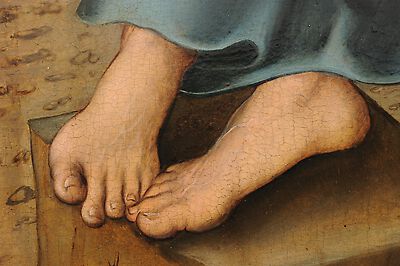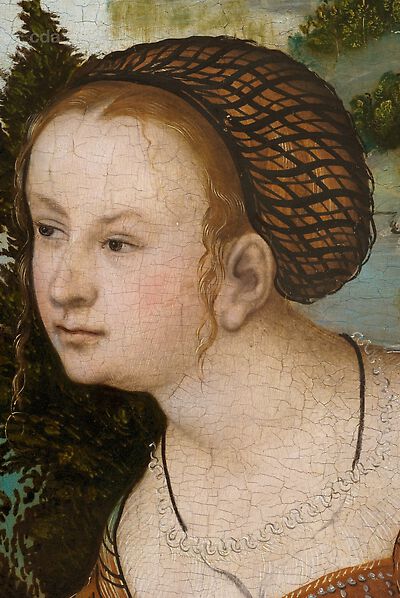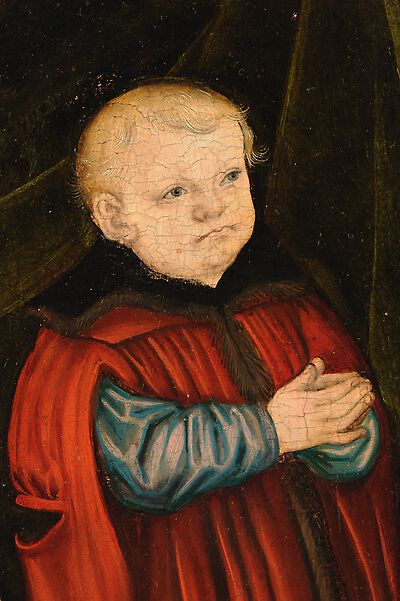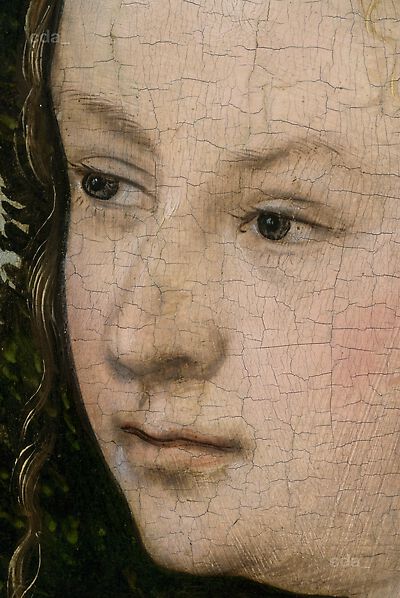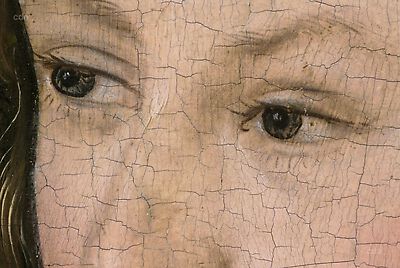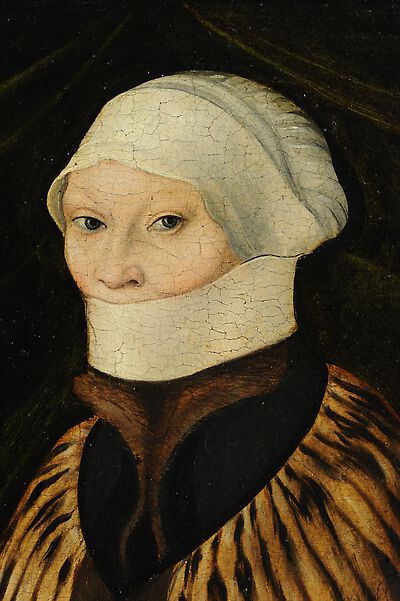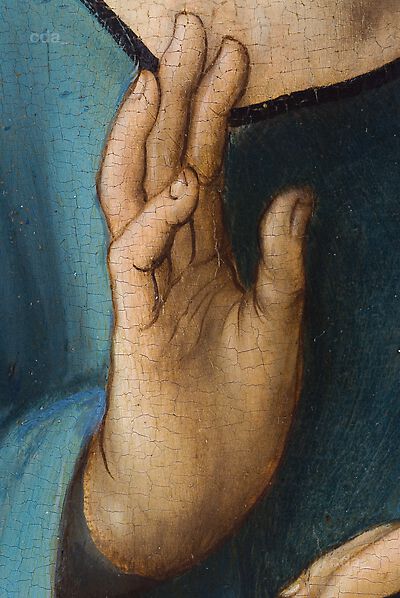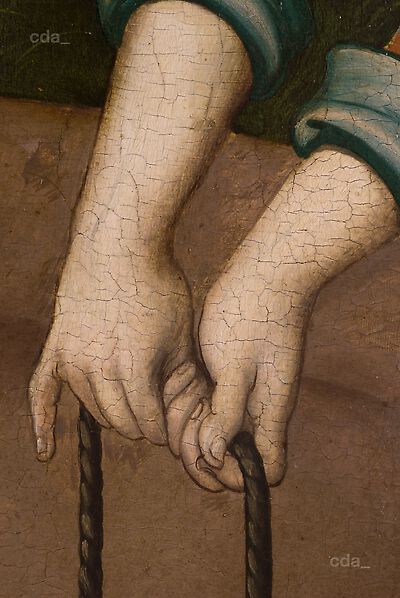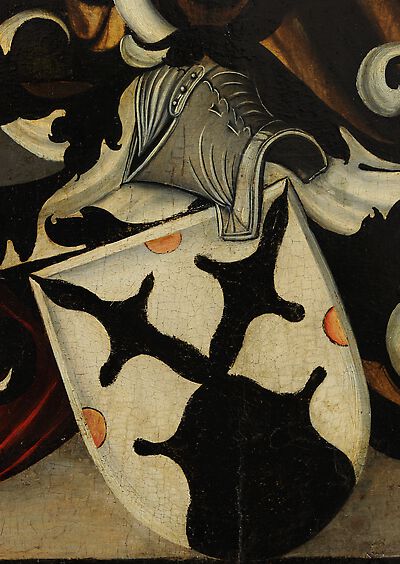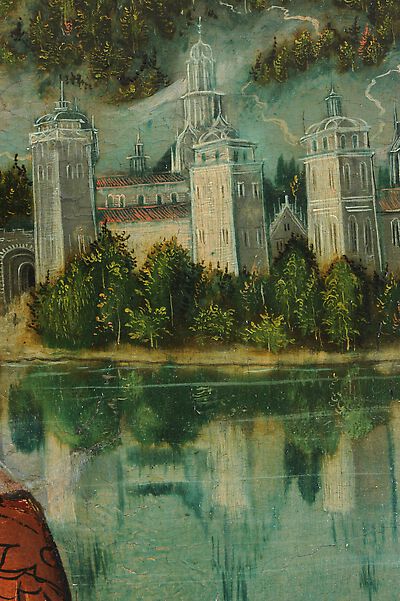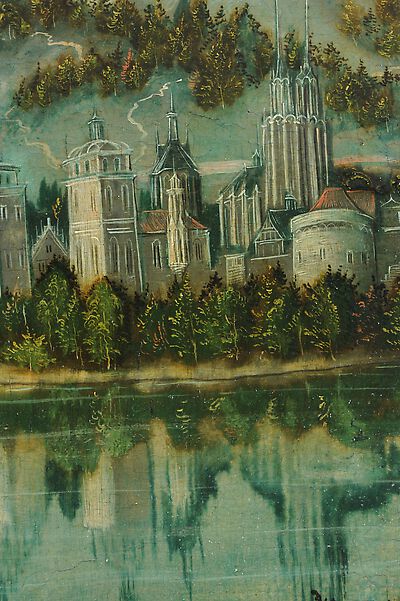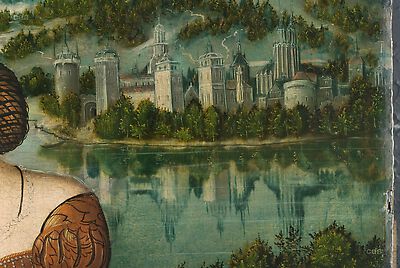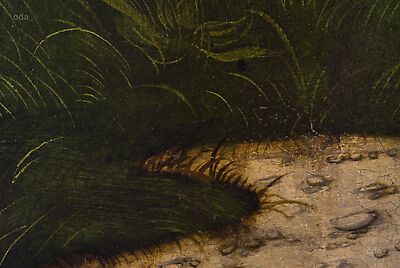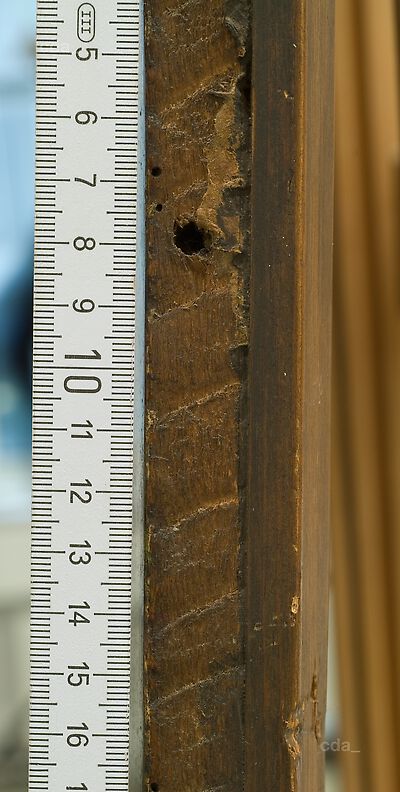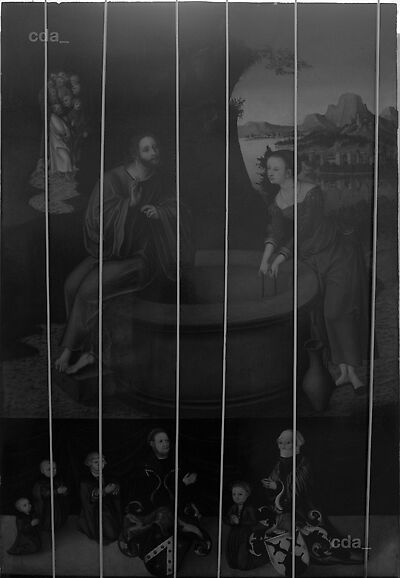Support
- limewood (Tila sp.); identification of wood species by Dr. Peter Klein, 26.10.2013, report from 26.10.13 in documentation file
- 7 vertically aligned boards with butt joints; widths: I: 9.6 b./5.4 t.; II: 22.2 t./18.8 b.; III: 19.3 b./18.1 t. IV: 13.2 t.11.3 b.; V: 19.0 b./18.3 t.; VI: 15.7 t./12.4 b.; VII: 14.6 b./12.1 t.
- reverse: no knots were detected in the visible surface of the panel (only c. 30% of the entire panel visible), tangential cut
- ithe reverse was completely smoothed down when the cradle was applied
- the joins, knots and growth weaknesses in the wood were reinforced with an applicationof tow. The fibrous material is clearly visibel on two old x-radiographs
- the edges of the panel are straight with no evidence of a groove
- the panel has been trimmed along the left and right edges; marks from a tool (probably an axe) are visible along the right edge
- treatment of damaged areas: at the bottom right, rectangular insert c. 3 x 7 cm, locations: 37 cm from the bottom and 17.5 cm from the right edge; at the bottom left edge, rectangular insert c. 3 x 10 cm, location: 20 cm from the left edge; at the top left in the group of apostles, rectangle c. 30 x 3 x 1 cm, location: 14 cm from the top left edge; knots: in the shoulder and hip of the samaritan, Christ's left thigh; further damages in the surface of the wood: at the right beside the feet of the samaritan and at the left of the well next to the jug
Ground and Imprimatura
- white ground, probably chalk/glue mixture (not tested)
- thick ground layer, c. 0.5 mm
- at the top and the bottom the ground extends to near the edge of the panel. there is no barb where it ends; at the right and left sides the ground extends to the edge of the panel (the edges have either been trimmed or reworked)
- there is no imprimatura and no incised lines, nor is there any evidence of marks from a tool
Underdrawing
- very economic underdrawing executed with a brush
- barely visible under the flesh paint
- assisting devices were not employed
- no obvious alterations were made during the painting process
Paint Layers and Gilding
Figures:
- the shadows and half-shadows were initially laid in on a white ground with cool greyish-brown washes and modulated with a soft brush application. In the areas of the highlights the white ground remained exposed. After the paint had dried a vermilion/ochre/white admixture was applied wet-in-wet and very delicately, in part scumbled over the greyish-brown layer to created a sort of mother-of-pearl flesh tone. This tone created the half-shadows. The dark brown/grey underpaint remained exposed for the shadows. Highlight were applied employing vermilion/lead white and blended with the wet flesh tones. Finally contours were applied in a brown tone. The hair was intitially laid in with an unmodulated ochre layer and after drying linear highlights and contours were added.
Robes:
- opaque underpaint, modulated wet-in-wet, light highlights blended. After drying the shadows were reinforced with glazes, the red robes were completely covered with a glaze and the shadows were applied in darker paint.
Sky:
a light blue (an admixture of blue and white) was applied over the white ground. In the upper section a thicker applicationof the same blue paint was employed.
Areas of grass:
- an initial dark brown layer was applied, over this a semi-opaque green paint roughly indicates the texture of the grass, finally lines define the leaves and blades of grass.
Woods (left):
- blackish-green opaque underpaint, the green foliage was then applied wet-in-wet with linear accents and contour.
- glazed to opaque application, pastos highlights (particularly in the grassy landscape, the robes and the hair)
- pointed and flat brushes of different sizes
- black painted band at the top and bottom of the painting: c. 1-1.5 cm (top) and c. 2-2.5 cm (bottom)
- discoloured green glazes (brown)
- no gilding
Framing
- probably first half of the 19th century; dimensions: 178.5 x 127 x 6 cm; coniferous wood
- colour: gilded, flat area matt gilding with an attached half-rounded profile, silver gilded with a gold glaze and patina.
- construction: frame with inlay. the rebate profile is an inlay profile (probably original); mitred joins with a mortise and tenon on the reverse (triangular tongue on all four corners).
- decoration: flat frame, two parallel half-rounded battens run around the front of the frame crossing at the corners.
[Museum der bildenden Künste, 11.06.2014]
